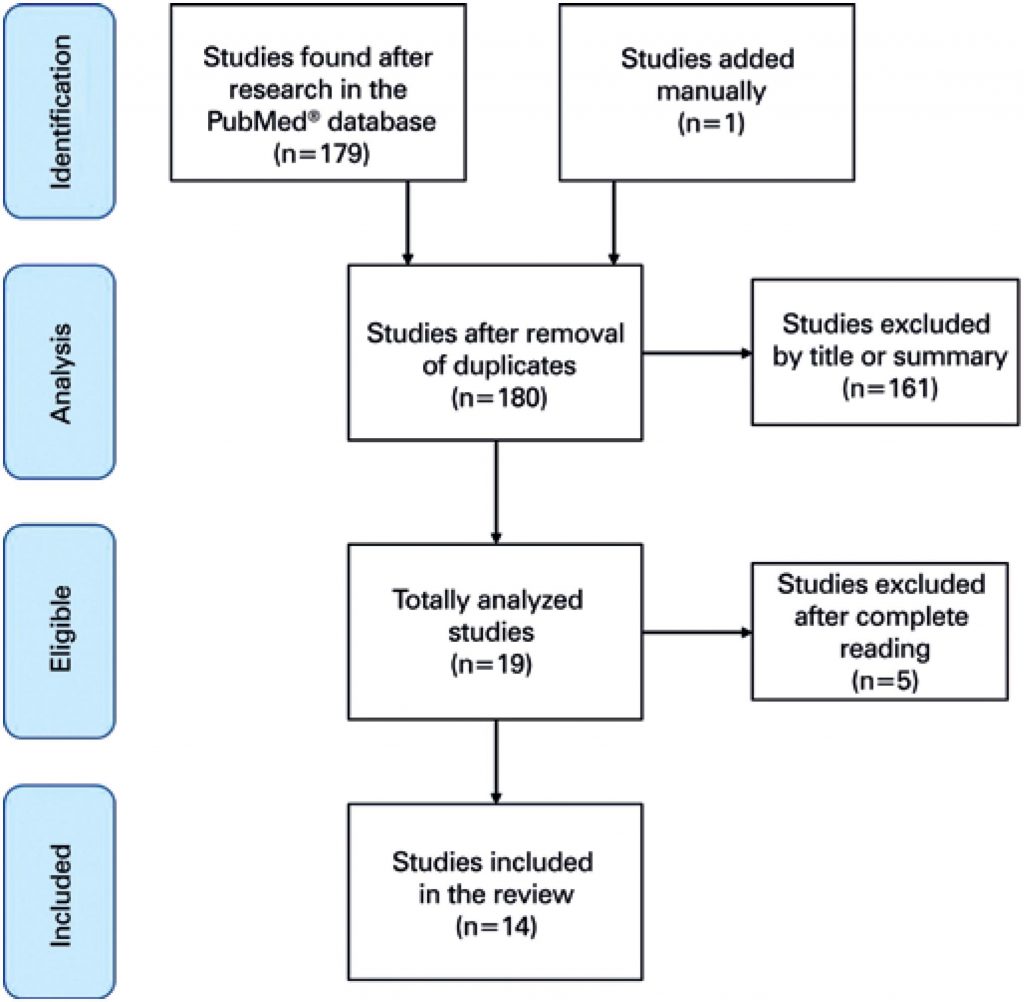einstein (São Paulo). 06/Nov/2020;18:eRW5909.
COVID-19 and the gastrointestinal tract: what do we already know?
DOI: 10.31744/einstein_journal/2020RW5909
ABSTRACT
The new coronavirus disease pandemic is defining 2020, with almost 17.5 million infected individuals and 700 thousand deaths up to beginning of August. It is caused by SARS-CoV-2 and the transmission is through the respiratory tract. Those infected may be asymptomatic, present typical symptoms (fever, dry cough and dyspnea), gastrointestinal symptoms (diarrhea, nausea, vomiting and abdominal pain) and viral RNA in stools. The objective of this work was to review the literature related to the prevalence of gastrointestinal symptoms, and to check the possibility of fecal-oral transmission. We searched PubMed® database on COVID-19 and gastrointestinal tract and selected articles using the PRISMA method. We eliminated articles based on titles and abstracts, small number of patients and the mechanism of infection, leaving 14 studies. Comorbidities and laboratory alterations (elevation of hepatic aminotransferases and bilirubin) were related to worsening of the disease. The prevalence of gastrointestinal symptoms ranged from 6.8% to 61.3%, including diarrhea (8.14% to 33.7%), nausea/vomiting (1.53% to 26.4%), anorexia (12.1% to 40.0%) and abdominal pain (0% to 14.5%). The presence of viral RNA in stools was rarely tested, but positive in 0% to 48.1%. The gastrointestinal tract is affected by COVID-19, causing specific symptoms, laboratory alterations and viral presence in the feces. However, the results of prevalence and possibility of fecal-oral transmission were varied, requiring further studies for more assertive conclusions. It is important that healthcare professionals draw attention to this fact, since these changes can help make diagnosis and initiate early treatment.
23,535

